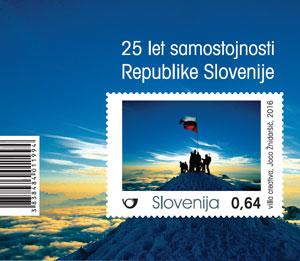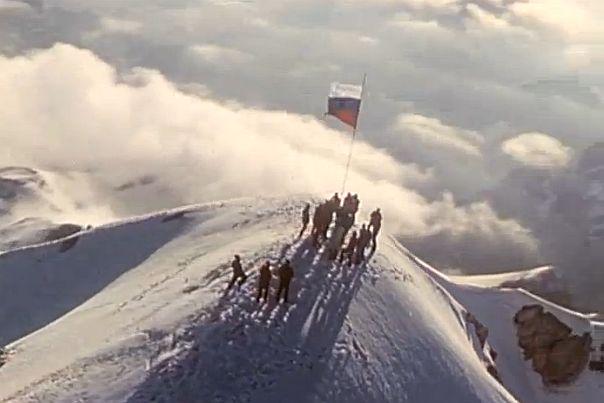

Back on the 10th and 20th anniversaries of Slovenian independence, the Post of Slovenia issued special commemorative stamps, and last summer it held a competition for a commemorative stamp with which it intended to mark the 25th anniversary of this country. Regarding the basic concepts and selection it consulted with the Protocol Service of the Republic of Slovenia and the Government Communication Office, which is also marking the 25th anniversary of Slovenian independence by setting up a thematic website. This is a contact point for chronological and historical data, current overviews from the areas of culture, home affairs, foreign affairs, tourism, sports and more, as well as a source of rich images and video material. Two decades and a half of the independent country are also shown through numbers and statistics.
The Commission for Issuing Postage Stamps and Indicia selected from among the entries received the creative offering from the design company Villa Creativa, featuring a photograph of Triglav, the highest mountain in Slovenia. The photograph is the work of professional photographer Joco Žnidaršič, who is featured in this edition of Sinfo.
The special commemorative stamp was issued on 27 May 2016, and on the same day was presented to the Slovenian National Assembly. Immediately upon the minting of commemorative coins by the Bank of Slovenia, the Post of Slovenia will also issue a philately/numismatic set. The precise date for the issuing of the coins is not yet set, all we know is the fact that it will be in the second quarter of this year.
Symbol of Slovenia
In a plebiscite held 25 years ago, Slovenian citizens voted in a democratic process in favour of independence, and achieved an independent state through peaceful means. In this way we fulfilled the centuries-old dream of generations of Slovenian women and men. Those generations had built their identity and national consciousness through culture, language and symbols, prominent among them Mount Triglav.
The highest peak of the Julian Alps, Triglav was revered by the various peoples (Celts, Romans, Lombards and Slavs) who crossed the territory of present-day Slovenia at one time or another. For a time the mountain represented little more than a border region, but it was invested with greater significance during the Age of Enlightenment in Slovenia. Triglav became the inspiration for numerous poets, authors, travel writers, painters and politicians.
Atop the summit of Triglav stands the Aljažev Stolp turret – a mountaineer’s refuge and the bastion of Slovenian identity, erected in 1895 by Jakob Aljaž, then parish priest in Dovje. Since 1999 Aljažev Stolp has been protected as a cultural monument of national importance, and as such it is highly important in maintaining Slovenia’s cultural heritage. The symbolic significance of Aljažev Stolp differs from the symbolic significance of Triglav itself, which as the highest mountain watches over Slovenia. Aljažev Stolp represents what stands on top of Mount Triglav and tells us that this is our Slovenian soul.
A magnificent view opens up from the summit of Triglav, stretching all the way from the Adriatic Sea, via the Dolomites and High Tauern to the Karavanke, the Kamnik-Savinja Alps, the Pohorje, right across Slovenia to the highest peaks of the Julian Alps. Each year Triglav is visited by huge numbers of people, and climbing to the summit holds special importance for mountain hikers.
Courage, resolve and unity, all these are represented in Triglav, whose symbolic message is also included in the emblems of statehood, and Slovenia is the only country whose national symbols – the coat of arms and flag – feature a specifically identified mountain. The message inherent in Triglav also convinced the Commission for Issuing Postage Stamps and Indicia, which selected the special stamp to commemorate the 25th anniversary of the independent Republic of Slovenia.

































































